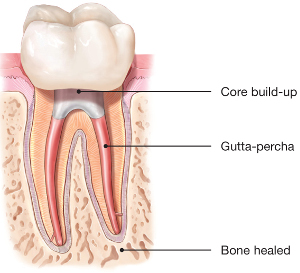What Is Endodontic Treatment?
“Endo” is the Greek word for “inside” and “odont” is Greek for “tooth.” Endodontic treatment involves the inside of the tooth.
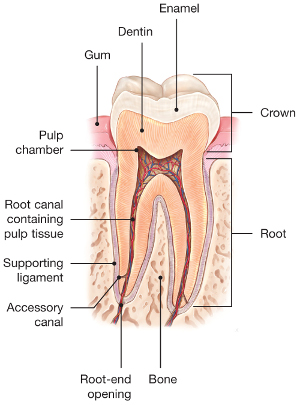
When soft pulp tissues (blood vessels & nerves) inside a damaged tooth become infected or inflamed, endodontic treatment is necessary. The inflammation can have a variety of causes: deep decay, tooth trauma or a cracked tooth. Untreated, the defects allow the infection to advance, which inflames the pulp inside the tooth causing pain or an abscess.
The good news is root canal treatment usually relieves pain nearly immediately. Remember, root canal treatment doesn’t cause pain, it relieves it. Our patients find that modern endodontic treatment is very similar to having a routine filling. Endodontic treatment is usually accomplished in one or two appointments where you can expect a comfortable experience during and after your appointment. And we fully discuss your case with you before any procedure takes place.
During root canal or endodontic treatment, the inflamed or infected pulp is gently removed and the inside of the tooth is carefully cleaned and disinfected, then filled and sealed with a rubber-like material called gutta-percha. Afterwards, the tooth is restored with a crown or filling for protection. After restoration, the tooth continues to function like any other tooth.
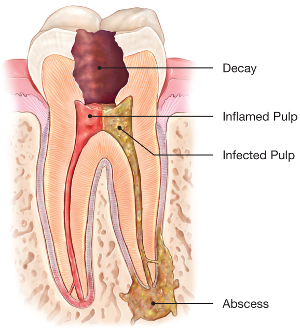
Endodontic treatment helps you maintain your natural smile and allows you to continue eating the foods you love. With proper care, most teeth that have had root canal treatment can last a lifetime.
What Are the Steps in Root Canal Treatment?
1. Root canal treatment begins with a thorough examination by the endodontist and appropriate diagnostic x-rays of the tooth. Then a local anesthetic is administered. When the tooth is numb, the endodontist places a “dental dam,” which is a small protective sheet, over the tooth to keep the area clean and free of saliva while treating your tooth.
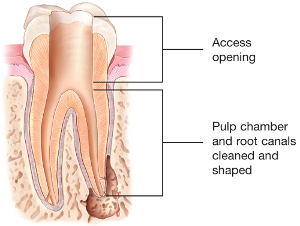
2. The endodontist makes a small opening in the crown of the tooth. Very small instruments are used to clean the pulp from the pulp chamber and root canals and to shape the space for filling.
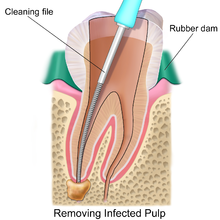
3. After the space is cleaned and shaped, the endodontist fills the root canals with a biocompatible material, usually a rubber-like material called gutta-percha. The gutta-percha is placed with an adhesive cement to ensure complete sealing of the root canals. In most cases, a temporary filling is placed to close the opening. The temporary filling will be removed by your dentist before the tooth is restored.
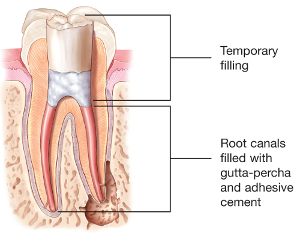
4. After the final visit with your endodontist, you must return to your dentist to have a crown or other restoration placed on the tooth to protect and restore it to full function.
If the tooth lacks sufficient structure to hold the restoration in place, your dentist or endodontist may place a post inside the tooth. Ask your dentist or endodontist for more details about the specific restoration planned for your tooth.
